Decorating a bedroom with a stone will emphasize the status of its owner, make the room stylish, remind of traditions - and at the same time will look very modern.
Stone can be used to cover the entire room, part of it, or focus on one of the walls; for a bedroom, this is usually the wall behind the head of the bed. This will make the bed stand out as the main piece of furniture.
Stone can be combined with plaster, wood or fabric trim, as well as with metal, glass, or ordinary wallpaper. The large number of possible options allows for a wide variety of styles when decorating interiors.
Advantages of decorative stone in the decoration of the bedroom
Compared to other finishing materials, decorative stone has the following advantages:
- environmental friendliness: the stone does not emit harmful substances into the air;
- durability: long service life without loss of appearance due to high mechanical strength;
- ease of installation: the side that is attached to the wall has a smooth rough surface, working with a stone is no more difficult than with ceramic tiles;
- biological resistance: no mold or mildew grows on the stone;
- easy care: you can use detergents (not containing abrasives);
- diversity: a wide range of colors and textures available.
The decorative stone used in the bedroom can be an exact copy of a natural material, or have a fantasy pattern. Quite often, imitation brick is used, and it can look like old masonry - this option is suitable for interiors in the loft or Provence style.
With the help of decorative stone, you can imitate not only brick, but even masonry from boulders, or, using polished stone, create even smooth surfaces.
The use of decorative stone in the interior of the bedroom
The stone can be used in almost any interior - classic, minimalism, provence, loft, Scandinavian style, and even in such sophisticated styles as Empire or Art Nouveau. In minimalism, stone trim can be the main and only decorative element. The only condition: compliance with the measure. Too much stone in the decoration can make the interior difficult to read.
When decorating a bedroom with stone, as a rule, they lay out one wall, and more often only part of the wall. Therefore, it is important to consider how the junction of the stone cladding with other finishing materials will look like.
If in hallways, on loggias and kitchens, “overflow” is often used, or decoration with “torn” edges, then in the bedroom this technique is not very appropriate, with the exception, perhaps, of the country style. In all other cases, it is necessary to limit in some way the place that is planned to be laid out with a stone. This can be a specially built niche behind the headboard, or limiting moldings.
In addition to the wall behind the headboard, a wall is often laid out with a stone, on which a television panel is mounted; this solution has recently become more and more popular.
With the help of stone finishing, you can zone the bedroom space, for example, by revealing a corner with a dressing table and a mirror.In any case, if you use decorative stone in the bedroom, it becomes the main accent in the interior, attracts attention and highlights the objects placed against its background.
Tips for decorating a bedroom with decorative stone
Stone, like any other finishing material, has its own specifics, which must be taken into account when developing a room design:
- You can decorate the entire wall with a light stone; if the room is small, the space will visually increase.
- In a large bedroom, you can trim a part of the wall behind the headboard with a stone, so that it protrudes from both sides by about 70 cm. Decorating a bedroom with a stone in a large room can take up an entire wall, but in this case, you will need to add some a large decorative element to balance it.
- If in a narrow bedroom the bed stands with its headboard against a long wall, in small rooms a wall is laid out with a stone behind the headboard, and in large rooms with a ledge of 70 cm or more behind the head of the bed.
- If in a narrow bedroom the bed is adjacent to a short wall with a headboard, it can be finished with stone entirely, but at the same time try to choose light pastel shades, avoiding too bright or very dark tones.
Depending on the appearance, pattern, texture, color, decorative stone can act as the main element in the interior, be an auxiliary means for zoning a room, or become a background for demonstrating original interior solutions. In any case, it will help to bring originality to the atmosphere of the bedroom, and to most fully express your individuality.
Video instruction for laying decorative stone

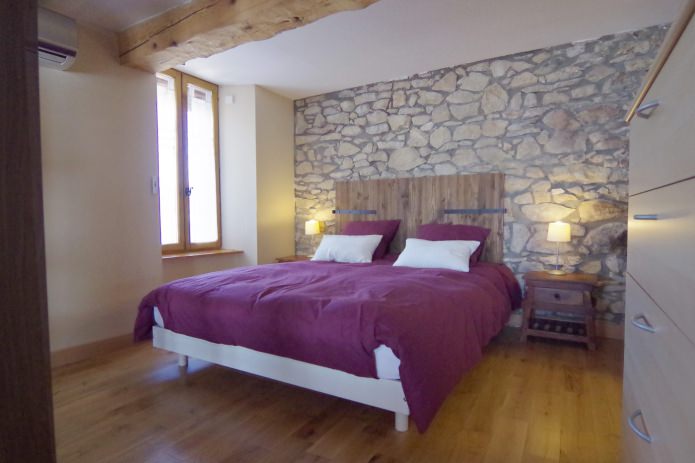
 10 practical tips for arranging a small kitchen in the country
10 practical tips for arranging a small kitchen in the country
 12 simple ideas for a small garden that will make it visually spacious
12 simple ideas for a small garden that will make it visually spacious
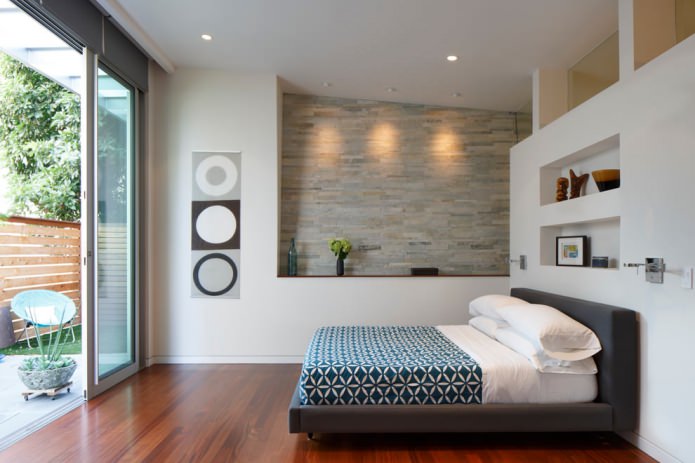
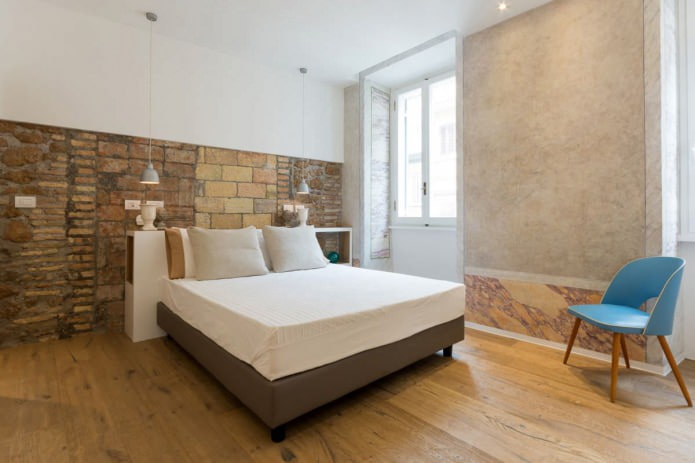
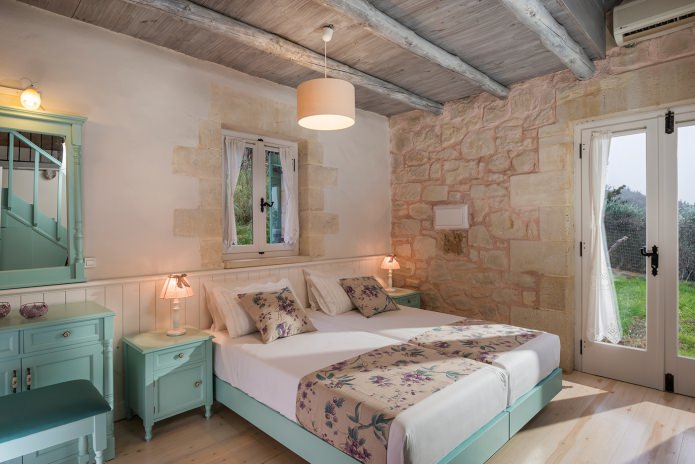
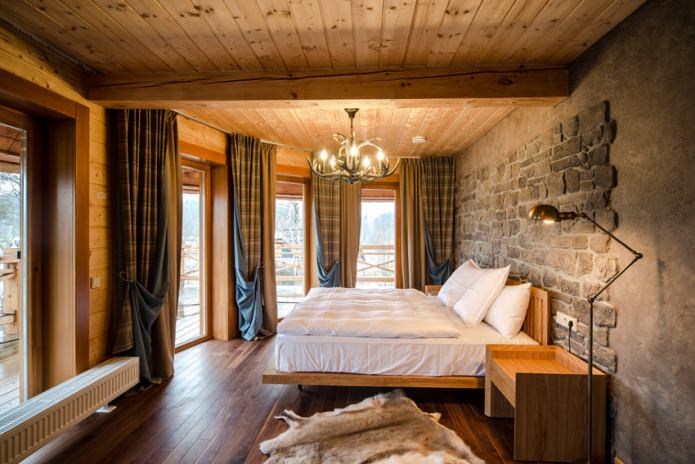
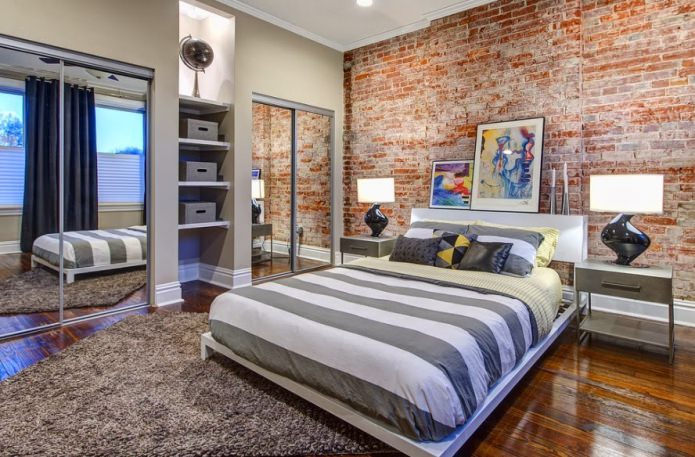
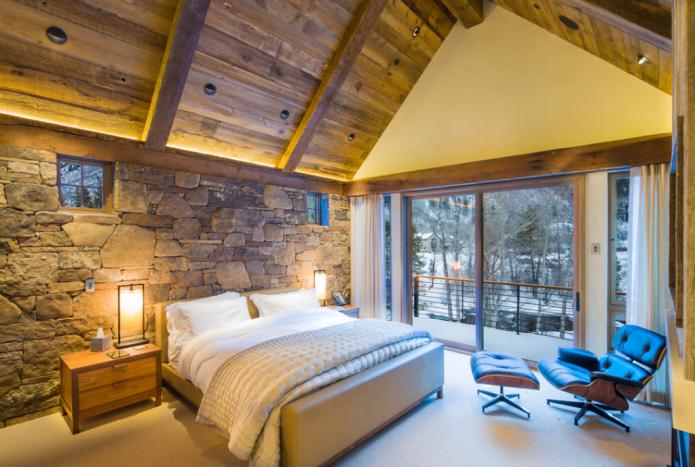

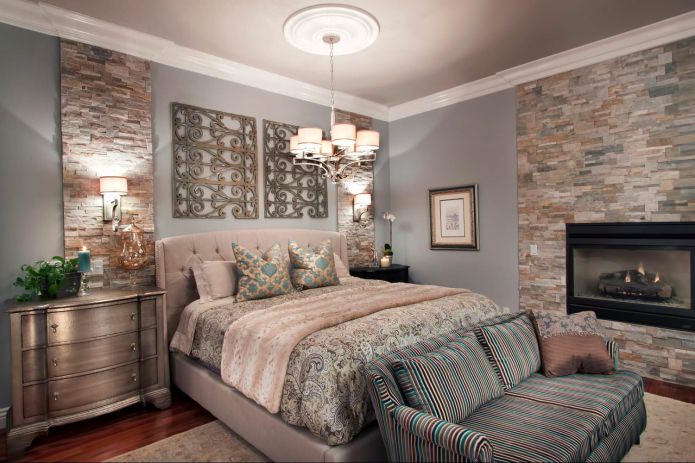
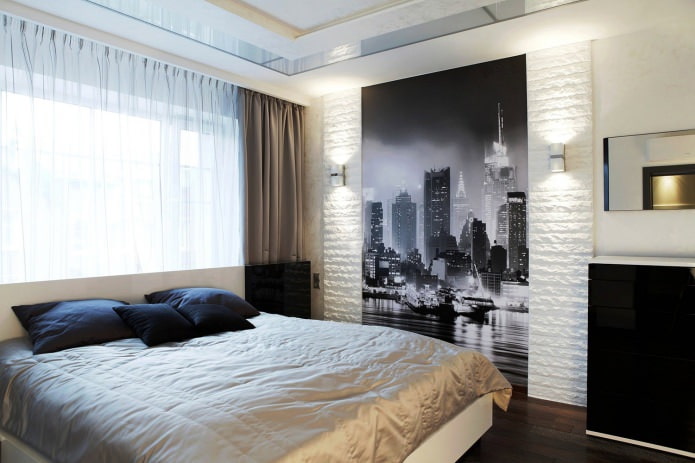
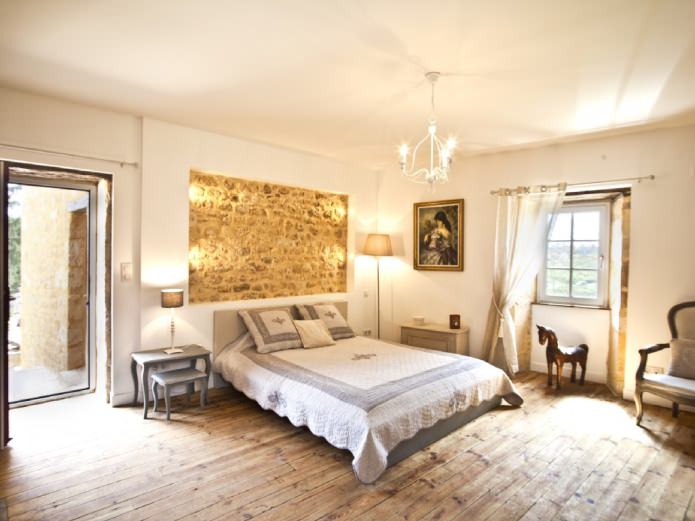
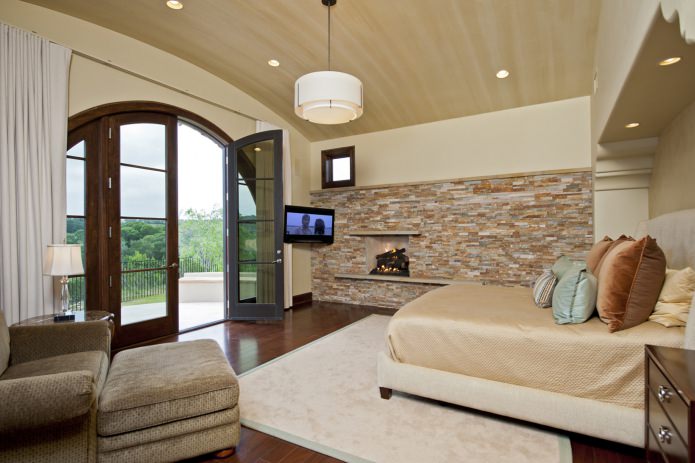
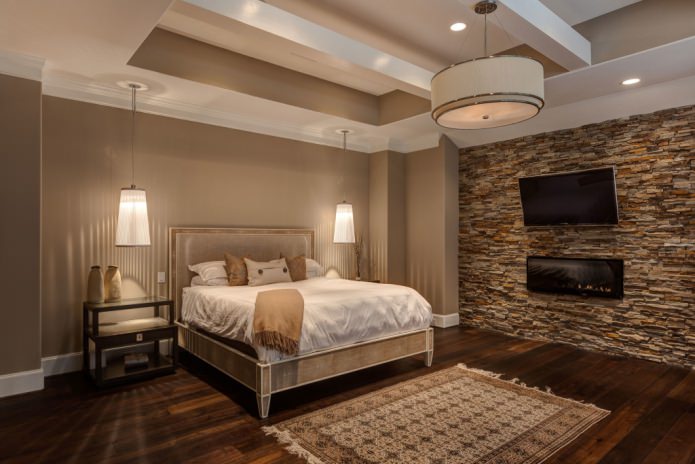
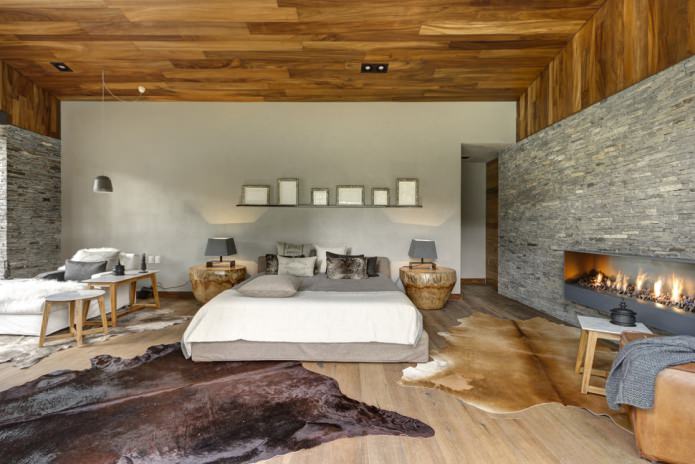
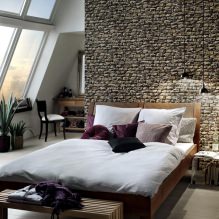


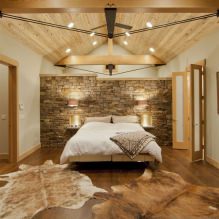
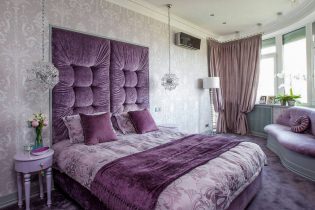 Wall design in the bedroom: choice of colors, finishes, 130 photos in the interior
Wall design in the bedroom: choice of colors, finishes, 130 photos in the interior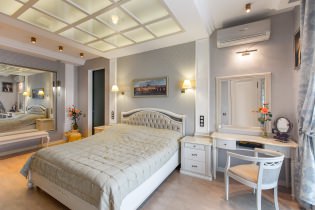 Bedroom design with gray wallpaper: 70 best photos in the interior
Bedroom design with gray wallpaper: 70 best photos in the interior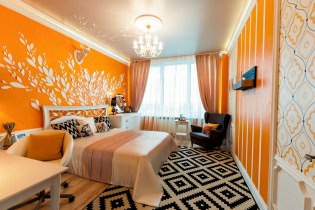 Bedroom design in orange tones: design features, combinations, photos
Bedroom design in orange tones: design features, combinations, photos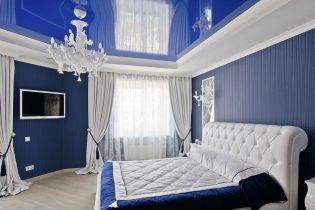 Stretch ceilings in the bedroom: 60 modern options, photo in the interior
Stretch ceilings in the bedroom: 60 modern options, photo in the interior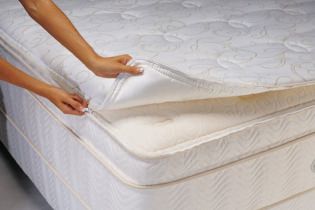 The choice of an orthopedic mattress: features, types of fillers, sizes
The choice of an orthopedic mattress: features, types of fillers, sizes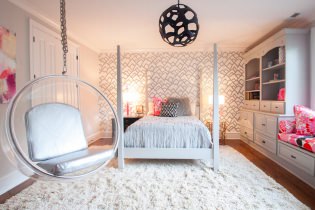 Bedroom design for a girl: photos, design features
Bedroom design for a girl: photos, design features